| First Ladies: The Role of Presidential Wives in the White House, Part 2 | |
| Editor’s note: Part One, First ladies from Martha Washington to Eleanor Roosevelt, was featured in the print edition of Vermont Woman, Spring 2018. |
|
It seems fitting that part two of this series begins with Jacqueline “Jackie” Kennedy and ends with Melania Trump, our current first lady. There are some striking parallels between these two women. Jackie Kennedy did not campaign very much for the presidency of her husband and became weary of spending time at the White House. She preferred to spend her weekends at a Virginia estate with her horses and go on extensive vacations. Like Jackie, Melania Trump avoided the campaign trail. She opted to stay at Trump Tower in New York, not moving to Washington until June 2017, and is often not in the company of the president. Jackie had two young children to raise and that was her priority, much like Melania with her son Barron. Melania, like Jackie, is an attractive woman and a glamorous fashion icon, spending thousands on dresses and accessories. Both women knew of their husbands’ mistresses and both tried to deflect attention from their husbands’ affairs. The one big difference: Jackie found causes and ways to shine and connect with the public. Melania has yet to find her footing in the public eye as of this writing.
|
|
Jackie Kennedy was a young first lady, age 32, and pregnant with her second child, John Jr., who was born just three weeks after her husband won the election. She set up a preschool in the White House to educate Caroline, age 4. Jackie’s popularity soared due to two events. When she traveled with her husband to Paris in the spring of 1961, she garnered admiration for her ability to speak French, her French ancestry and appreciation of French culture and history. The president summed up the trip this way, “I am the man who accompanied Jacqueline Kennedy to Paris, and I have enjoyed it.” A year later, she gave a television tour of the White House, and her breathy, upper-class accent did not turn people off. They were fascinated with this fashionable woman who actually knew something about furniture and buildings. |
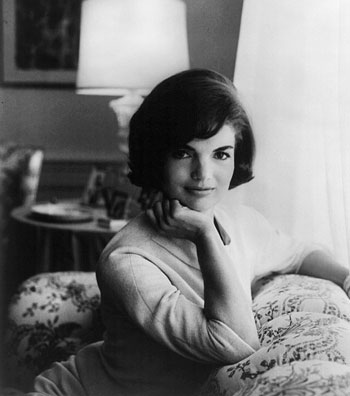 |
She redefined state dinners, hosting about 16 during her term, by creating glamorous settings. Her clothes, designed by Oleg Cassini, an American with European ties, were showstopping. Who could forget her pillbox hat! She wanted to dress the part and considered this an expression of diplomacy. Jackie’s relationship with her husband improved after the loss of their infant son Patrick in 1963. Three months later, the couple went to Texas as part of a kickoff for a 1964 campaign, where Kennedy was fatally shot. Jackie tried to hold onto JFK’s historical legacy. She referred to notes on Abraham Lincoln’s funeral for assistance on planning the mourning ceremonies in Washington and orchestrated a riveting state spectacle. But the fact remained: in one tragic moment, she had lost her husband, her home, and her job. In assessing Jackie, she may be seen as a transitional figure from the traditional role of first lady to the more modern full partnerships of the next presidential couples. She had not spoken out on public policy, yet her public relations ability was stellar. To some historians, the Kennedys would forever epitomize the great hopes, great faith, and great power Americans felt at the start of the 1960s.
|
|
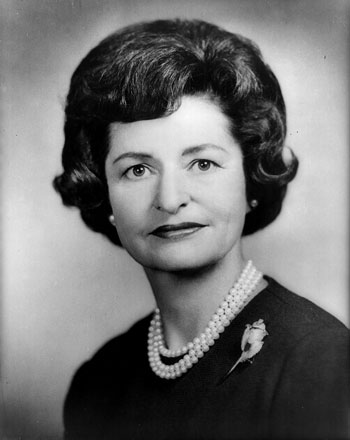 |
|
Lady Bird was excellent on women’s issues and the environment. She advocated for Head Start, the early childhood program, and encouraged women activists with “Women Doer Luncheons.” She was the first first lady to have legislative and lobbying strategy sessions with White House staff. She spearheaded the beautification of the capital cirt. She worked on the National Historic Preservation Act, the Clean Rivers Restoration Act, the Air Quality Act, the National Trail Systems Act, and the Wild and Scenic Rivers Act. Her actions helped create the environmental movement we see today. Betty Boyd Caroli, a presidential wives expert, summed up Lady Bird’s impact: “she…wrote the book for modern first ladies, what they needed to do to be noncontroversial and yet contribute to a spouse’s legacy.” |
|
Skipping over Pat Nixon who had little impact on the office, Betty Ford was a breath of fresh air with her open opinions and frankness, which rankled the Republican Party. She even has a Vermont connection with her study at the Bennington School of Dance in her youth. She had not expected to be a first lady and had planned to retire with her husband to private life after his term as vice president. She shared her diagnosis and surgery for breast cancer with the nation, which was very different from other first ladies, who hid all health concerns. Our current first lady, Melania Trump, has kept a recent kidney surgery totally private, and that has been the usual approach. Not Betty! Her discussion about cancer screenings increased use of them by 400 percent across the nation. She was pro-choice, stating “I feel very strongly that it was the best thing in the world when the Supreme Court voted to legalize abortion … bring it out of the backwoods and put it in the hospitals where it belongs. I thought it was a great, great decision.” |
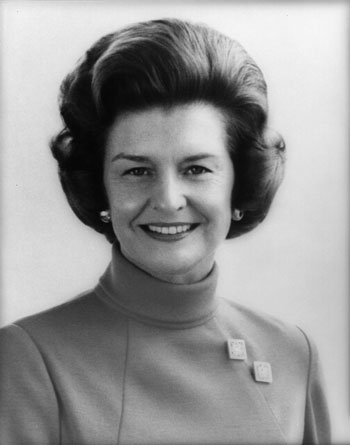 |
She approved of premarital sex and urged people to support the Equal Rights Amendment. She lobbied the four states that could ratify this amendment to no avail. She advocated equal pay for equal work and championed the National Black Women’s Agenda. She was for gay rights! The historian Richard Norton Smith called Betty “the most political first lady since Eleanor Roosevelt.” He continued, “When it comes to women’s health issues, literally, history is divided into two periods: there’s before Betty, and after Betty. … She connected with millions of women. She was candid about her personal struggles.” |
|
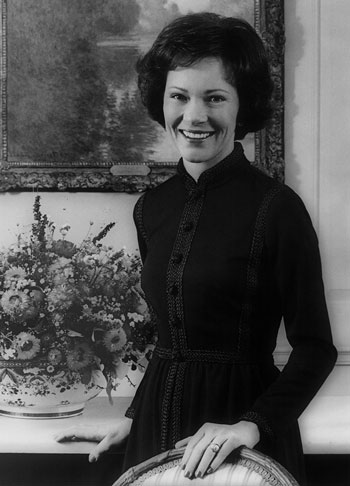 |
They were a team. When Jimmy Carter was elected, the country got the plus of Rosalynn as well. That is how Carter presented his wife to the public: he respected her intellect and ability that much. Together they decided not to have an elite presidency, thus they walked to the White House after the inauguration in 1977. They had grown up in Plains, Georgia, in the segregated South, but were in favor of integration, and while in Washington, DC, they sent their daughter to a public school. They made sure they lunched together once a week to discuss serious issues, and she attended cabinet meetings without speaking but took notes. Rosalynn reorganized the office of first lady. Her divisions were: projects and community liaison, press and research, schedule and advance, and social and personal. She had a chief of staff and gave 500 speeches and talks at the White House. She lobbied Congress on the ERA, mental health education, and the plight of refugees. She traveled to Latin America in 1977 to speak about human rights, nuclear arms control, and slowing down conventional arms sales. When her husband stayed at the White House in 1980 during the hostage crisis, she went out and campaigned and was bitter about their defeat. The Carters’ postpresidency has been a remarkable success and a model for others to follow. |
|
Nancy Reagan started out with several missteps. She wore expensive gowns and renovated the White House with private money from oil companies—just after her husband removed the controls on oil prices. While she spent money, the country suffered a recession, and unemployment was at 10 percent. By the end of 1981, she had the highest disapproval rating of a first lady in modern times. Yet, after President Reagan was shot, Nancy was given massive public support, and in 1982, she began her crusade against drug abuse. She was on television during the SuperBowl and appeared on a late-night talk show. By the end of 1984, her popularity had soared to 71 percent. Nancy had a large role in the second term of her husband. She made many of the presidential decisions and steered “Ronnie” in many ways. He was treated for cancer, and she arranged his schedule and stepped in for him at functions. As his memory loss became apparent, she covered up and ruled the roost. When the Iran-Contra scandal broke in 1987, she demanded that Donald Regan be fired as chief of staff along with William Casey of the CIA and Pat Buchanan of the communications office. She claimed she was looking out for the welfare of her husband. |
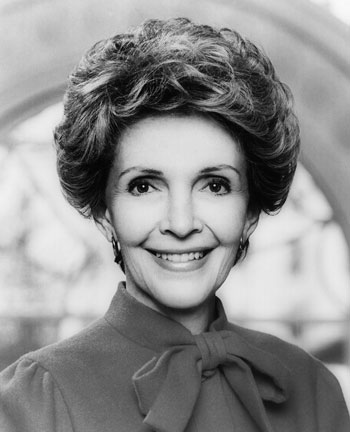 |
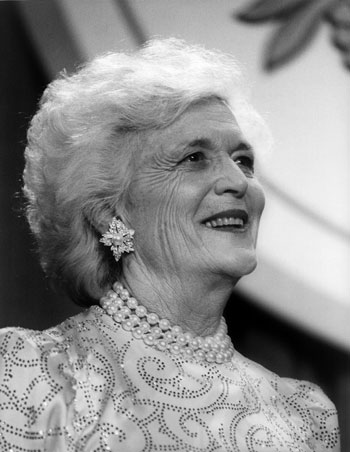 |
Since Barbara Bush’s death on April 17, many have noted what a decent and outspoken person she was. One of her last political statements was for women not to vote for Donald Trump for president. In some ways, she reflected her time period. She married a navy pilot during World War II and chose to devote her life to him, raising their six children. The Bushes lived their political lives by “making friends and social connections and moving up through political circles by melding politics and friendship,” according to Jeffrey Engel, author of The China Diary of George H.W. Bush. I know this for a fact since my parents were friendly with the Bushes and were invited to one of the Bushes’ homes in Kennebunkport, Maine, one summer night. My mother campaigned with Barbara Bush in New Hampshire. Barbara was willing to take moral stands, according to Engel, “but without interfering with her husband’s political career.” In March 1982, she stated: “I’m a giant cheerleader. I’m cheering for teachers who are underpaid, under praised and overworked.” |
And in August 1992, Barbara issued the following statement on abortion: “The personal thing should be left out of platforms at conventions. You can argue yourself blue in the face, and you’re not going to change each other’s mind. It’s a waste of your time and my time.” She is the second first lady, after Abigail Adams, to have a son become a US president. Asked how she could do that, she referred to her dedication in her memoirs “to faith, family, and friends; and to George Bush, who taught me that these are the most important things in life.” |
|
Being a first lady should have been easy for Hillary Clinton. After all, she had been part of her husband’s campaigns and had been a first lady of Arkansas. Still, the Clintons, with their refrain of “two for the price of one,” did not gain the approval of everyone. For those with traditional first ladies in mind, Hillary seemed to want too much power. In 1993, President Clinton set up the Task Force on National Health Care Reform and appointed Hillary as the chair. Her leadership made her a target for those in the opposition, and her tendency toward privacy put fuel on the fire. The health care plan collapsed in 1994. In 1996, she was subpoenaed to testify before a grand jury about the Whitewater dealings. That same year, her disapproval rating among the public was 54 percent. To make matters worse, she did not get along with the press. To counter this negative publicity, she wrote It Takes a Village: And Other Lessons Children Teach Us and gave hundreds of speeches. |
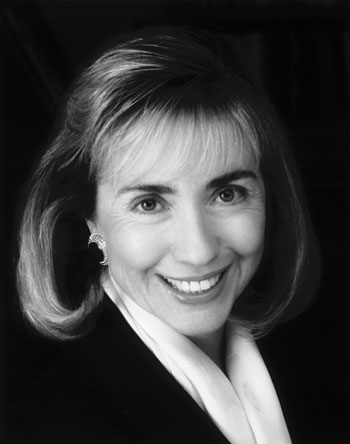 |
| Bill Clinton’s second term in office (1998–2001) presented further challenges for Hillary, with the Monica Lewinsky scandal and impeachment proceedings. Fortunately, Hillary weathered these storms and managed to turn her political fortunes around, running a successful campaign for the US Senate in 1999. In 2000, New York state voters elected her as their first female senator. During her husband’s second term, she was a part-time first lady and a full-time campaigner. | |
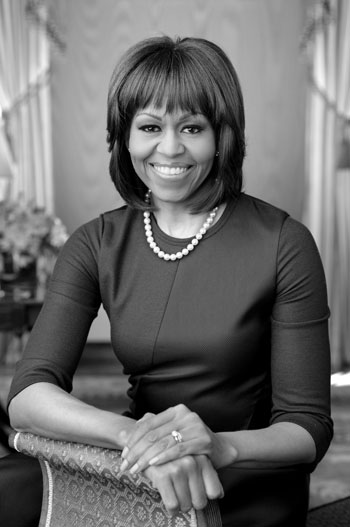 |
Skipping over Laura Bush, a rather traditional first lady, one turns to Michelle Obama, with much expected of her as the first African American woman to be in that position. She had leaped far, from a very basic house in Chicago to the fanciest house in the land. Michelle did not see herself in the lives of the previous occupants of the White House. She was, like Hillary Clinton, an Ivy League trained lawyer, but unlike Hillary, she did not want to wield power in the West Wing or hold elective office. She wanted to be a good mother to her children and even asked her own mother to live at the White House as a stabilizing force. |
Trying to be sympathetic to Melania Trump is difficult since she must have known whom she was marrying in 2005. Donald Trump was in the middle of divorcing wife number two and on a date with another woman when he met Melania, a model born in Slovenia. Thus she became the first naturalized citizen to be a first lady. She speaks six languages: English, French, Italian, German, Serbo-Croatian, and Slovenian. Yet the sexual misdeeds of her husband really deter from her possible public face. Most women would be embarrassed and upset, to say the least, having such a difficult husband who wields so much power nationally and internationally. However, a recent article by David Smith in the Guardian praises Melania over her first state dinner for Mrs. and Mrs. Emmanuel Macron of France, which she organized. Once again, she could be compared to Jackie Kennedy, but Melania, unlike her predecessor, did not want the press at the dinner. Jackie, however, wanted to be onstage and gain all the publicity she could muster to advance the arts in the United States. |
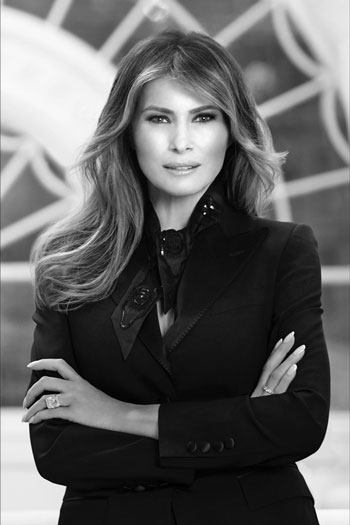 |
| Melania has been criticized for failing to reach out to independents and Democrats. Other first ladies were able to cross partisan lines quite deftly. Larry Jacobs, director of the Center for the Study of Politics and Governance at the University of Minnesota, levels quite a bit of criticism at Melania Trump with these words: “This is probably the most disengaged first lady we’ve had in the modern era. It’s a bit late in the game for her to be emerging now. It’s not what we’ve seen other first ladies do. She’s missing in action.” | |
Being effective in the role of a presidential wife can be daunting. Many wives plotted and planned to get their husbands into the highest office, but some dreaded the experience. Eleanor Roosevelt thought it would be a step backward for her aspirations; Hillary Clinton thought it would be a step forward for her ambitions. As women gain equal status in society, there will be more political partners like Rosalynn Carter and Hillary Clinton. Being allowed to head a commission or task force might become more acceptable. There could also be more independent types who would refuse to leave their paid positions. Howard Dean’s wife, a Vermont doctor, implied that if her husband won the presidency, she would continue to be a doctor and might even stay in Vermont. The future is hard to predict. What would happen if a woman was elected? Would the “first gentleman” take over the social and hosting dimension or would that be too radical a role reversal? Is it possible that one day we might elect an unmarried person and would those traditional responsibilities then revert to professionals at the White House or another relative? But the office of first lady (or gentleman) could also continue to be the means or venue for endless leadership initiatives.
|
|
|
Cyndy Bittinger, writer and historian, teaches Vermont history and women’s history at the Community College of Vermont. Her books include Grace Coolidge: Sudden Star and Vermont Women, Native Americans and African Americans: Out of the Shadows of History.
|